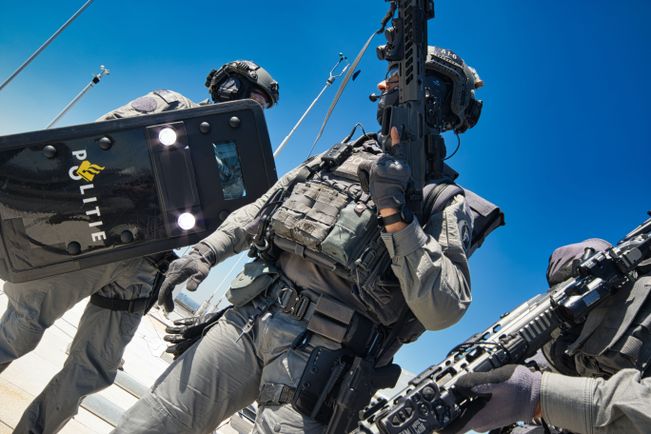21.11.2023
The Economics of Conflict: A Costly Reality
Introduction
War and conflict have been persistent features of human history, shaping societies, economies, and geopolitical landscapes. Beyond the immeasurable human toll, these events exert profound economic impacts, both in the short and long term. This article delves into the intricate web of economic consequences associated with war and conflict, supported by statistics and real data examples.
The Immediate Costs of War
-
Military Expenditure:One of the most apparent economic consequences of war is the surge in military expenditure. Nations engaged in conflicts divert significant resources to fund their armed forces. According to the Stockholm International Peace Research Institute (SIPRI), global military spending reached $1.83 trillion in 2021, highlighting the immense financial commitment to maintaining military capabilities.
-
Destruction of Infrastructure:War inflicts severe damage on infrastructure, including roads, bridges, schools, and healthcare facilities. The reconstruction costs can be astronomical. For instance, the Iraq war, which began in 2003, led to the destruction of critical infrastructure. According to a report by Brown University, the total economic cost of the Iraq war was estimated to be over $2.2 trillion, including both direct and indirect costs.
-
Human Capital Loss:The loss of human capital is immeasurable but has tangible economic repercussions. Casualties, injuries, and displacement disrupt labor markets and diminish productivity. In Syria, the ongoing conflict has resulted in significant human capital loss, with millions of people displaced and economic activities severely curtailed.
Long-Term Economic Consequences
-
Debt Accumulation:Financing wars often involves taking on substantial debt. Governments borrow extensively to fund military operations, reconstruction, and social services. Over time, this debt can become a long-term economic burden. For instance, the United States experienced a notable increase in its national debt following major conflicts such as World War II and the Iraq War.
-
According to the Congressional Budget Office (CBO), the Iraq and Afghanistan wars alone contributed significantly to the U.S. debt, with the total cost estimated to be around $2 trillion by 2020.
-
Disruption of Trade and Investment:Wars disrupt trade and deter foreign investment, causing long-lasting economic consequences. The ongoing conflict in Ukraine, for example, has led to economic sanctions and trade disruptions, impacting not only the involved nations but also global economic dynamics. According to the World Bank, countries experiencing conflict face a decline in foreign direct investment (FDI), hindering economic growth prospects. The adverse effects on trade and investment can persist for years after the cessation of hostilities.
-
Humanitarian and Social Costs:Beyond the immediate economic implications, wars generate extensive humanitarian and social costs. Displaced populations, refugees, and the breakdown of social structures contribute to long-term challenges. In regions affected by prolonged conflict, the loss of education opportunities and healthcare access stifles human development.
-
The United Nations Refugee Agency (UNHCR) reported that, by the end of 2020, there were 82.4 million forcibly displaced people worldwide, including refugees and internally displaced persons. The economic burden of managing these displaced populations is immense, impacting both host countries and the international community.
-
Impact on Global Economic Growth:Wars and conflicts have spillover effects on global economic growth. The Institute of Economics and Peace estimated that in 2020, violence and conflict cost the global economy $14.96 trillion, equivalent to 11.3% of the world's GDP. This includes direct costs, such as military expenditures, as well as indirect costs like lost productivity and increased healthcare expenses.
-
Regions affected by ongoing conflicts, such as the Middle East and North Africa, experience reduced economic growth rates, exacerbating poverty and inequality. The economic consequences of war ripple across borders, affecting both neighboring and distant economies.
Case Study: The Syrian Conflict
The Syrian conflict, which began in 2011, provides a compelling case study of the multifaceted economic impact of war. According to the World Bank, the cumulative GDP loss in Syria between 2011 and 2016 amounted to $226 billion, reflecting the severe economic contraction caused by the conflict.
The destruction of infrastructure, loss of human capital, and disruption of economic activities have pushed millions of Syrians into poverty. The UN estimates that 13.4 million people in Syria require humanitarian assistance, with 9.3 million living in extreme poverty.
Moreover, neighboring countries hosting large numbers of Syrian refugees, such as Lebanon and Jordan, have faced economic challenges due to the influx of displaced populations. The strain on public services, labor markets, and infrastructure has had enduring economic consequences in the region.
Finance Wars as a stimulus for Economies
Countries may resort to financing wars as a means to stimulate their economies for several reasons, although this approach is often controversial and comes with significant risks. Here are some economic perspectives on why countries might pursue war as a stimulus:
-
Military-Industrial Complex:In some cases, countries with a significant military-industrial complex may see war as a way to boost domestic production and create jobs. The production of weapons, equipment, and other military-related goods can stimulate economic activity in sectors directly related to defense.
The United States during World War II is a notable example. The war effort led to a massive mobilization of resources, creating jobs and driving economic growth. The military-industrial complex became a key driver of the U.S. economy during the conflict.
-
Stimulating Aggregate Demand:Wars, particularly large-scale conflicts, often require substantial government spending. This increased government expenditure, whether on military equipment, infrastructure, or personnel, can serve as a form of fiscal stimulus. By injecting money into the economy, governments aim to stimulate aggregate demand, leading to increased production and employment. However, this approach carries risks, as the economic benefits may be outweighed by the long-term costs and consequences of war.
-
Boosting Technological Innovation:Wars often drive technological innovation, as countries invest in research and development to gain a military advantage. The technologies developed for military purposes can later find applications in civilian industries, contributing to economic growth.
For example, the Cold War-era space race between the United States and the Soviet Union led to significant advancements in aerospace technology, which later benefited civilian industries.
-
Resource Acquisition:Some conflicts are driven by a desire to control valuable resources, such as oil or minerals. Countries engaging in wars for resource acquisition may anticipate economic benefits through the control or exploitation of these resources. Access to key resources can enhance a nation's economic competitiveness and resilience. However, the economic benefits from resource acquisition through war must be weighed against the potential costs and ethical considerations associated with such actions.
-
Distraction from Economic Issues:Governments facing economic challenges or domestic unrest may view a foreign conflict as a way to divert attention from internal issues. By rallying public support around a common cause, leaders might hope to strengthen their political position and mitigate domestic economic concerns.
This strategy, known as the "rally around the flag" effect, relies on the idea that citizens are more likely to support their government during times of external threat, potentially fostering a sense of national unity.
It's crucial to note that while war may have short-term economic effects, the long-term consequences are often complex and can include significant economic, social, and humanitarian costs. The destruction of infrastructure, loss of human capital, and the potential for long-term geopolitical instability can offset any immediate economic stimulus gained through wartime measures. Additionally, the ethical and moral considerations surrounding the decision to go to war make it a contentious strategy for economic stimulation. Sustainable economic growth is more reliably achieved through peaceful and cooperative means, such as investments in education, infrastructure, and innovation.
Conclusion
The economics of war and conflict extend far beyond the immediate costs of military operations. From the destruction of infrastructure to the long-term impacts on trade, investment, and human development, the economic consequences are profound and enduring. As nations grapple with the complexities of conflict, understanding the economic dimensions becomes imperative for crafting effective policies that mitigate the lasting scars of war on societies and economies.






